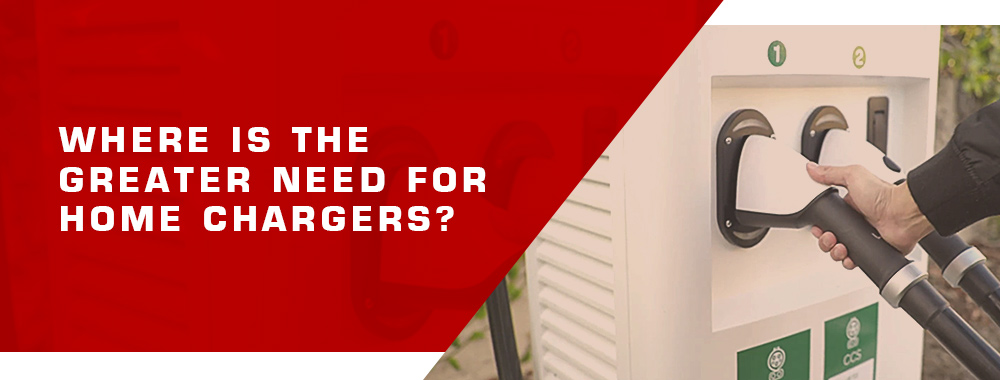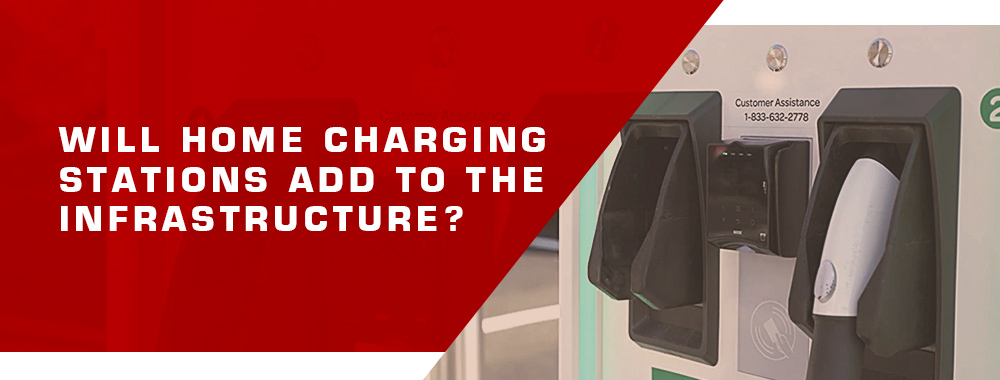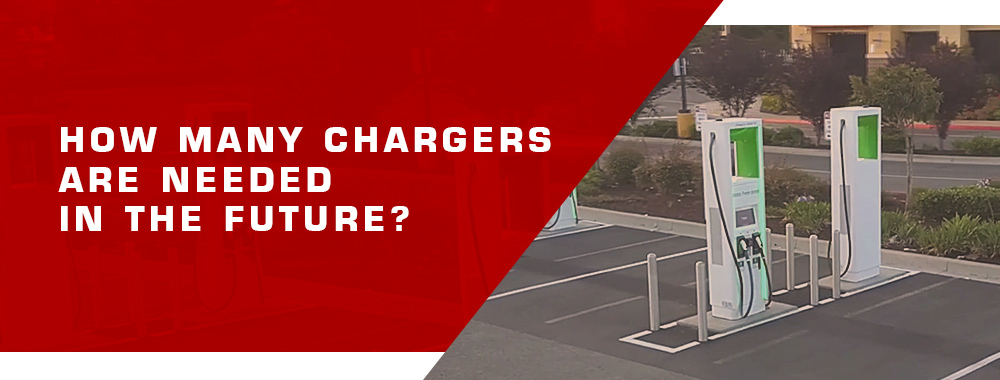The next decade will be very different for the auto industry than the last 20 years. The next key dates are seen as 2025 and 2030, when the industry will change radically and form a huge market for chargers.
11. What will accelerate sales of electric cars?
The main thing holding back the growth of electric cars in 2021, according to car owners, is the poorly developed network of charging stations. According to manufacturers’ stated plans, by 2025, about 350 electric car models with a range of more than 200 miles per charge should appear on the market, their prices will continue to fall, and they will become a significant alternative to traditional cars with internal combustion engines. With lower prices and higher mileage, the limited network of charging stations will be one of the biggest obstacles to the development of electric vehicles.
10. What will be the number of electric cars by 2030?
Based on the forecasts of car manufacturers, by 2030 there will be about 120 million electric cars on the road in China, the U.S., and Europe—the main markets for electric vehicles. And this is the conservative scenario described by experts back in 2011. The aggressive scenario, which implies government incentives for the purchase of electric vehicles and investments in this industry, almost doubles this figure.

The territorial distribution of electric vehicles is uneven. Accordingly, the infrastructure serving electric vehicles is also uneven. If we look at the experience of the U.S., as the country that has been the furthest along the path of electric transport development and which demonstrates certain experience that can be relied on, we can distinguish two main types:
- Areas with low population densities and a high proportion of private households with their own parking lots or garages — Los Angeles, for example;
- Areas with high population densities, apartment buildings and public parking, such as Manhattan.
The two areas will have very different needs for charging infrastructure for electric vehicles.
08. Will more electricity be needed with the spread of electric transportation?
The increase in the number of electric cars will lead to an increase in the demand for electricity to charge them from 20 billion kWh per year at present to 280 B kWh by 2030. This figure reflects the increase in the number of electric cars, their average mileage, and average energy consumption per mile driven. And while 280 B kWh is a pretty serious figure, it is actually only 10% of current consumption in the U.S. alone, not including China and Europe. So an increase in energy consumption will not be a serious barrier to the development of electric vehicles.
07. Where can an electric car be fueled?
Unlike traditional cars with internal combustion engines, electric cars can be fueled wherever there is access to an electrical outlet: at home in the garage, in the parking lot near the workplace, in public parking lots, and at special fueling stations [22]. This simplifies the development of infrastructure. In addition, ongoing experiments with electric vehicle charging options show the prospects of new charging methods, such as wireless charging at parking lots [4] or traffic lights.
With more and more BWM i3 owners becoming among our customers, we thought it would be a good idea to provide some information on the BMW EV chargers. If you are interested in learning about these charging stations or electric cars, have a look at the next article that will discuss what kind of charger fits best with this vehicle. Keep an eye out for our other blogs as well because there is plenty of helpful content available!

Different charging options dictate the requirements for devices and infrastructure. Charging in the garage or in a private parking lot near the house implies that the electric car is operated in an area with low population density or the owner lives in a private house or townhouse, where individual parking directly next to the apartment or house is possible. The car is parked for at least 10–12 hours a day and an inexpensive NEMA 14-50 home charger with low charging currents and power of about 20 kW can be used for such charging spots.
Charging electric vehicles near places of work depends mainly on the availability of parking lots and the goodwill of the employer, stimulated by administrative benefits or regulations.
The future of transportation is electric, and the Chevy Equinox is leading the way with its latest electric model. Charging Chevy Equinox EV is easy and convenient, thanks to its advanced charging capabilities that allow you to charge your car at home or on the go. With its environmentally-friendly design, you can feel good about driving a car that reduces your carbon footprint and helps protect our planet.
05. Where are the charging station networks prioritized?
For areas with high population density, such as Manhattan, as mentioned at the beginning of the article, only public paid battery charging stations can be the main option for charging stations [22], including those in parking lots.
Despite the fact that more than 90% of trips are made from home to work or to the store, there are still about 5%–7% of trips that people make over long distances [18], which electric cars cannot make on a single battery charge. Such trips will require fast-charging stations on highways [22]. It should be said that this classification is not strict. Thus, an electric car owner who lives in a townhouse but does not have his or her own charger can use a paid charging station in a public parking lot or at work.
04. Where is the cheapest place to charge an electric car?
As mentioned above, most electric cars are parked outside the house for 10-12 hours a day. At the same time, charging the battery at home is cheaper due to the fact that electricity for private households is cheaper than energy for commercial facilities. You can calculate the cost of charging yourself using the cost to charge ev calculator. In addition, charging electric cars in the parking lot near the house will take place at night, when the total consumption is lower and, accordingly, the cost of energy is lower.
Two types of rates are often seen in charging station networks. These are per-minute charging and per-kilowatt charging. See here how to find out the cost of charging an electric car for your home or at one of the networks. By 2030, about 75% of electric cars in the U.S. are expected to be charged at individual charging stations.
03. What kind of charging stations are there?
The next question is what types of charging stations will be present and developing in the market in the next decade. We can talk about 3 current types of stations:
- AC Charging Station. An inverter in a car.
In a charging station like this, the car inverter converts alternating current to direct current (DC), which then charges the battery. These stations have a capacity of up to about 12 kilowatts and are a typical, private long-charge station for homes. - DC charging station. External inverter.
These stations convert alternating current from the mains into direct current and then it enters the car and charges the battery without the need for an inverter onboard the electric car. At the moment there are models from 25 kilowatts to over 350 kilowatts. - Wireless charging station.
This kind of system uses electromagnetic waves to charge the batteries. Modern stations have a capacity of up to 11 kilowatts.
02. Where are the charging stations located?
The power of the charger determines the speed at which the battery of an electric vehicle will be charged. AC charging stations with long battery charging times can only be used in long car parking areas. DC charging stations with a capacity of about 50 kW are more suitable for public parking lots and business centers, while fast-charging stations of 250 kW and higher are for charging stations along highways.
In general, AC and DC charging stations will occupy the lion’s share of the market by 2030. At the same time, most of the energy will be supplied to electric cars through NEMA 14-50 EV chargers for homes, or near places of work.

If we summarize plans for electric vehicles, the number of private homes, business centers, and the number of public charging stations needed, we can estimate 40 million chargers for China, the United States, and Europe by 2030. According to analysts, consumers will spend about $50 billion on chargers.In the U.S. alone, about 13 million new charging stations will be installed, at a cost of $11 million. In addition to the charging stations themselves, other products such as EV charging cord extensions and J1772 adapters are expanding the market volume in this segment.
In the United States, cheaper individual charging stations cost less than $1,000, while in Europe and China public charging stations and stations in parking lots near workplaces will prevail, costing between $3,000 and $5,000 for small DC stations and can go as high as $25,000 to $200,000 for fast charging stations placed along highways.
I recently read that the main issue for EV adoption is the lack of charging stations. Living in a rural area, I feel this deeply. Had to plan my trips around charging points. Anyone else in a similar boat?
I’m in a small town, and it’s the same issue here. It’s like a game of hide and seek with charging stations. Hoping the infrastructure catches up soon. How’s everyone else coping?
Excited about the 350 new EV models by 2025! I remember when choices were so limited. Can’t wait to see the variety and how it changes the market. Anyone else looking forward to this?
The possibility of charging EVs wirelessly at parking lots sounds like a dream. Imagine the convenience! I’m curious how soon we’ll see this become a reality. Thoughts?
Read about the Biden admin’s goal for 500,000 EV chargers by 2030. As an EV enthusiast, this is great news! But I wonder about the logistics. How feasible is this plan?
As someone interested in tech, the future of EV charging blows my mind – wireless, high-speed, solar charging. It’s like we’re living in a sci-fi novel. Anyone else geeking out over this?
Just installed a NEMA 14-50 EV charger at home. The convenience is unbeatable. It feels like we’re slowly moving towards a more EV-centric world. Anyone else installed home chargers?
Got a home charger too. It’s a game-changer, especially for someone with a busy schedule. No more detours to public charging stations. How’s your experience been?
I’m a bit concerned about the environmental impact of producing so many chargers. Yes, EVs are greener, but what about the manufacturing process of these chargers? Anyone have info on this?
Heard about dynamic charging – charging while driving. Sounds futuristic, but is it really possible? How would it work? Would love to hear more about this from the tech-savvy folks.
I run a small business and considering installing an EV charger for customers. Is it a good investment? Would love to hear from other business owners who’ve done this.